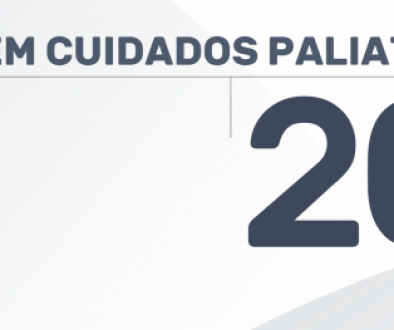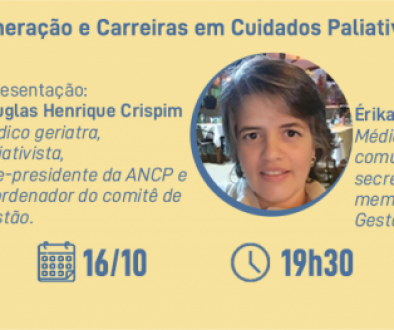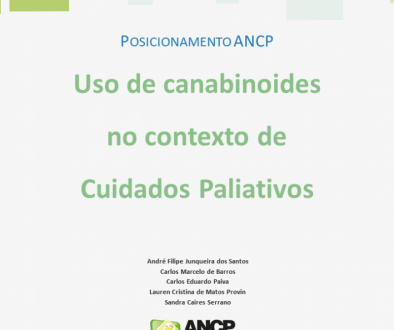OMS prepara-se para lançar Plano Global sobre Doenças e Agravos Não Transmissíveis; Cuidados Paliativos estão incluídos
Em breve, a Organização Mundial da Saúde lançará um Plano de Ação Global (GAP, na sigla em inglês) em Doenças e Agravos Não Transmissíveis (2013-2020, sigla: DANTs (português) e NCDs (inglês).
O plano vem sedo debatido pelos estados membros das Nações Unidas desde o ano passado. O texto final será referência para políticas públicas em todo o mundo relacionadas a doenças que vão desde a hipertensão até o câncer.
O governo brasileiro tem participado das discussões com a Dra. Deborah Carvalho Malta. coordenadora geral de Vigilância de Agravos e Doenças Não Transmissíveis (CGDANT), do Ministério da Saúde.
No início de março, associações de Cuidados Paliativos de todo o mundo, incluindo a Academia Nacional de Cuidados Paliativos, se juntaram e redigiram um documento solicitando mudanças no texto do Plano Global. Essas mudanças buscam fortalecer as referências a Cuidados Paliativos no texto final.
Leia a seguir, em inglês, o documento que foi enviado à OMS e que foi assinado pela ANCP:
Comments on Global Action Plan on Non-Communicable Diseases with respect to the morphine consumption indicator and provision of palliative care services
8 March 2013
We, the undersigned, welcome the opportunity to comment on the draft Global Action Plan on Non-Communicable Diseases.
We make the following recommendations:-
- The GAP should refer to the toll of morbidity, disability, suffering and premature mortality due to NCDS
- The GAP should clearly and prominently recognize that NCDs will continue to be a major cause of morbidity and mortality in years to come and that many people will require palliative care related to NCDs.
- The GAP should contain a separate section on palliative care with background information on the morphine consumption indicator, its purpose, context and limitations and specific recommendations for developing palliative care services either in the body of the document or as an appendix.
- Palliative care should be included as a priority country action within Appendix 3. Palliative care language should be strengthened throughout the Global Action Plan, including making explicit reference to the action needed by the secretariat, member states and UN funds, programmes and agencies.
- As we strongly believe that many policy makers, governments and service providers do not understand palliation as a key part of prevention and control, we would like to ensure that wherever prevention and control is mentioned within the Global Action Plan, palliation is also included. (E.g. objective 1: To strengthen international cooperation and advocacy to raise the priority accorded to prevention control and palliation of Non-Communicable Diseases in the development agenda and in internationally-agreed development goals).
At 1.
The GAP currently does not articulate the human suffering that accompanies NCDs.
At 2.
The GAP currently does not adequately recognize that there will be a continuing burden of non-communicable diseases. No matter how much progress is made on prevention and despite best efforts many diagnoses will be at advanced stage of disease with associated pain and other distressing symptoms. The GAP should clearly recognize that countries have a duty to ensure these people will have access to pain relief and palliative care services.
At 3.
We believe that the Action Plan should contain a specific section on palliative care that introduces the morphine consumption indicator and provides guidance on development of palliative care services. In particular, this section should explain the purpose, context and the limitations of the indicator as well as the existing reporting and monitoring mechanism of the International Narcotics Control Board. The section should clarify that:
- the indicator provides a measurement of one important component of palliative care but not of other critical aspects of this health service;
- although cancer is in the denominator of the indicator, palliative care is required for all patients with life-limiting illnesses;
- palliative care provides an opportunity to strengthen health systems beyond cancer and NCDs; and
- Member States should adopt a comprehensive approach toward developing palliative care services that is not limited to pain treatment or to terminally ill patients only.
It should recommend that Member States adopt additional indicators to measure other aspects of the palliative care spectrum.
This section should acknowledge Member States commitment to a palliative care resolution in 2014 and furthermore include recommendations the World Health Organization has previously made regarding palliative care development. In particular, it should reiterate its recommended public health model for palliative services in the home, community and hospital settings. In this model, WHO recommended that countries take action in three areas that are considered of fundamental importance:
– Public health policies that guide and support the development of palliative care;
– Education of healthcare workers in palliative care;
– Ensuring the availability and accessibility of essential palliative care medicines, including opioid analgesics. [1]
At 4.
In addition to a specific section on palliative care within the Global Action Plan we also make the following recommendations to the current text. This is to strengthen the Global Action Plan in order to ensure that progress is made in relation to people with NCDs accessing palliative care.
Appendix 3: Table 3: A minimum set of actions
Under objective 4, there must be an explicit reference to palliative care as a low cost intervention to be prioritised in order to immediately address pain and suffering of people with NCDs. For further information, on this please refer to the attached document ‘Rationale and Proposed Language for Palliative care in Global Action Plan.’
Core body of text of Global Action Plan
29b. The role of the WHO secretariat and its regional offices in the provision of technical support on palliative care to national governments should be explicitly referenced. We welcome the inclusion of specific reference to WHO’s role in developing technical guidance and norms on palliative care in 45d.
44b. Member states must make progress towards Universal Health Coverage through financing palliation initiatives, not just preventative and curative initiatives as is currently outlined. Universal Health Coverage covers prevention, promotion, treatment, rehabilitation and palliation.[2]
44c. In relation to expanding coverage, palliative should be included as a component of primary care and as a core component of meeting the long terms care needs of people with NCDs.
44d. In relation to the training of health care workers, there should be specific reference to the training of health care workers in palliative care.
44e. Access to controlled medications should be explicitly referenced as a vital component of the response to NCDs in terms of treating pain and suffering. Action towards this needs to be explicitly set out in order to make progress against the access to palliative care indicator within the framework.
45b. The role of the secretariat should clearly reference the need to support countries in integrating cost-effective interventions for non-communicable diseases and their risk factors into health systems, including essential primary health care packages, and improve access to prevention and palliative care programmes essential medicines, including controlled medicines and affordable technologies.
Appendix 5: Proposed actions for UN funds, programmes and agencies besides WHO
UNICEF – UNICEF should strengthen the capacity of health ministries to ensure access to palliative care including pain medications for children and adolescents
UNAIDS – UNAIDS should support health ministers to strengthen chronic care, including palliative care, for HIV and Non-Communicable Diseases.
UNODC – UNODC should address the barriers to access to controlled medications to ensure access for people with Non-Communicable Diseases
Appendix 6: Proposed process indicators
There should be a specific proposed indicator for monitoring progress which looks at the number of countries that have a palliative care policy in place (or inclusion of palliative care within existing related national policies), including on access to controlled medications.
Signatories
Academia Nacional de Cuidados Paliativos – Brazil
African Palliative Care Association
Asociación Latinoamérica de Cuidados Paliativos
Canadian Hospice Palliative Care Association
European Association for Palliative Care
Help the Hospices
Human Rights Watch
Indian Association of Palliative Care
International Association for Hospice and Palliative Care
International Children’s Palliative Care Network
Kenyan Hospices Palliative Care Association
Open Society Foundations’ International Palliative Care Initiative
Palliative Care Australia
Union for International Cancer Control
Worldwide Palliative Care Alliance
For further information, please contact Claire Morris at cmorris@thewpca.org
[1] Palliative Care Triangle in Stjernsward, Foley and Ferris. J Pain Symptom Manage. 2007 May; 33(5):514-20.
[2] Universal Health Coverage: Report by the Secretariat for the WHO Executive Board http://apps.who.int/gb/ebwha/pdf_files/EB132/B132_22-en.pdf (Accessed February 2013)




